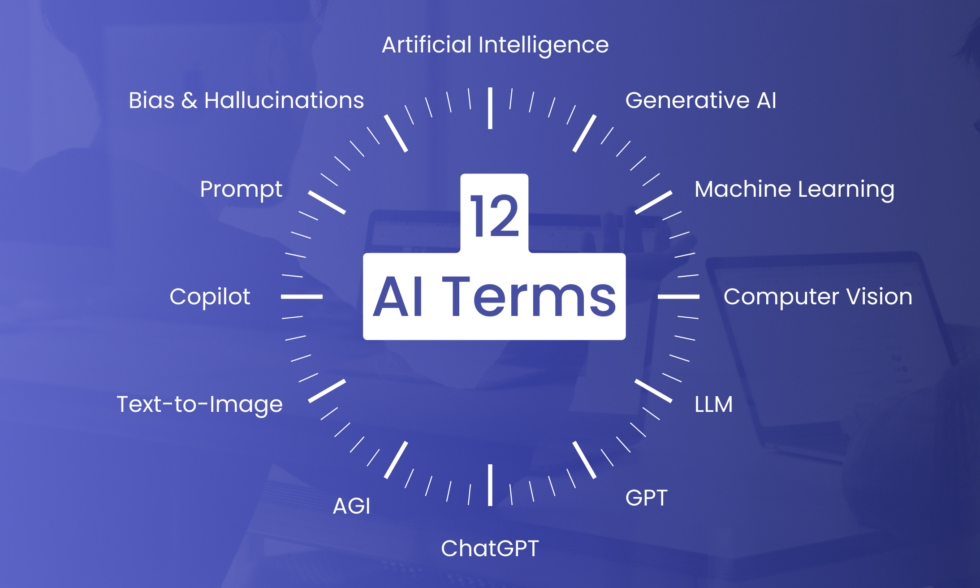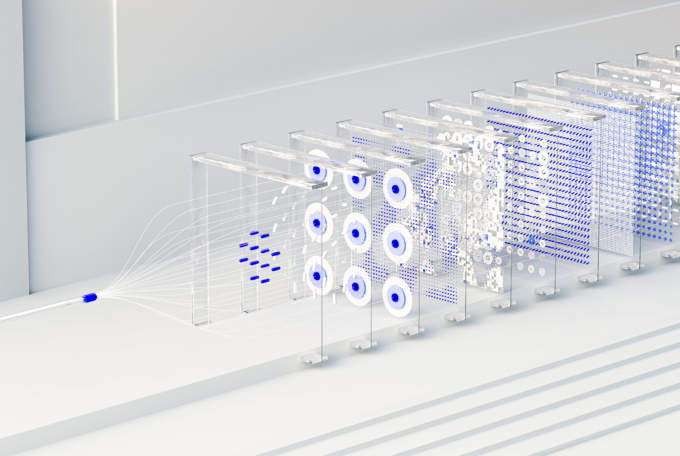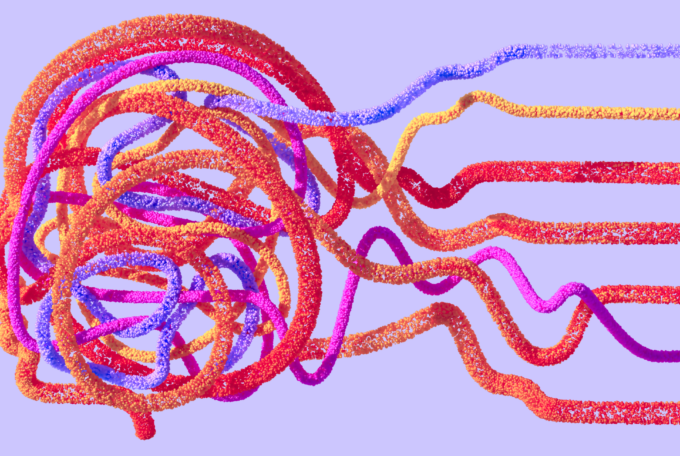As a business professional with a deep tech background, I try to make people start using AI to improve their work efficiency, limit bottlenecks and generally have go-to tools that make their work/life more comfortable. I notice that sometimes people are afraid of AI and quite often the reason behind that is not understanding how it works and what its limitations are.
In this post, I would like to demystify basic AI terms hoping that it will be a good starting point for everyone who wants to get familiar with AI.
Here’s a straightforward guide to some of the key AI terms you need to know:
Concepts and Areas
1. AI (Artificial Intelligence)
It is a broad area of computer science focused on creating systems that can perform tasks that typically require human intelligence. This includes things like recognizing speech, making decisions, understanding languages, and recognizing patterns or objects.
From simple tasks like recommending a product on eBay to complex ones like driving a car (eg: Tesla), doing human-like activities like walking, jumping and navigating (eg: Atlas robot by Boston Dynamics) and understanding or generating human-like text (eg: ChatGPT). AI is reshaping how we live and work, aiming to perform tasks better and faster than humans in some areas.
2. Generative AI
Generative AI, or GenAI, refers to AI models that can create content, it can be text (eg: ChatGPT), images (eg: DALL-E), music (eg: MusicLM), design (eg: Uizard), etc.
Generative AI uses generative models in order to produce outputs similar to the input data they were trained on. For instance, after studying a set of photographs, a generative model can begin to produce new photographs that look as if they could belong to the original dataset, even though they are entirely new creations.
3. Machine Learning
Machine Learning is a subset of AI where machines learn to perform tasks by analyzing and learning from data. Unlike traditional programming, where rules are explicitly coded, machine learning allows the system to learn and improve from experience based on reward function (eg: in the chess-playing model the training reward function would be win/loss). It’s like teaching a child to ride a bike; instead of instructing every movement, the child learns through practice.
4. Computer Vision
Computer Vision is an AI field that focuses on enabling machines to interpret and understand visual information from the world. It’s like giving a computer eyes and the ability to analyze what it sees. This technology is used in various applications, from facial recognition in smartphones to identifying defects in manufacturing.
Specific Models and Technologies
5. Large Language Model (LLM)
Type of AI in the text generation area. You can think of it as text generators that were trained to produce text and fine-tune it to be able to answer your questions. It involves teaching a computer model to understand, predict, and generate human language by feeding it a large amount of text data. This process enables the model to understand context, nuance, and even the subtleties of different languages.
6 GPT (Generative Pre-trained Transformer)
GPT is like a highly intelligent machine that has read a vast amount of text. It’s a type of AI that can understand and generate human-like text based on the input it receives. Imagine it as a super-smart assistant who has read everything on the internet and can help you write and analyze emails, articles, documents and others!
7. ChatGPT
ChatGPT is a specific application of the GPT model, designed primarily to converse with humans. Think of it as a chatbot on steroids. It’s not just about answering questions – ChatGPT can hold a conversation, provide explanations, and even showcase a sense of humour, making interactions smoother and more natural.
8. AGI (Artificial General Intelligence)
AGI is the holy grail of AI research. While current AI specializes in specific tasks, AGI aims to create models with the ability to understand, learn, and apply knowledge in a way that’s similar or even better than human intelligence. It’s like comparing a calculator (which excels in math) to a genius who can excel in everything.
The timeline for achieving AGI is highly uncertain and a subject of much debate among experts. Predictions vary widely, with some experts suggesting it could be decades or even centuries away, while others believe the breakthroughs necessary for AGI could occur much sooner.
9. Text-to-Image Generation
Text-to-image generation is an exciting AI capability where the model converts written descriptions into visual images. Imagine describing a sunset over the ocean in words, and an AI creates a beautiful image of that scene. It’s a blend of creativity and technology, opening new possibilities in art, design, and communication. Examples of AI-based tools that offer text-to-image generations are DALL-E, Midjournay and Leonardo AI.
Development Tools
10. Copilot (model of the tool)
Copilot in AI refers to systems designed to assist and augment human abilities, rather than replace them. It’s like having a co-pilot in a plane who can handle tasks, provide recommendations, and ensure a smooth journey. In software, GitHub Copilot, for example, assists programmers by suggesting code and snippets based on the context of the work.
In the end, these terms represent just the tip of the iceberg in the vast and deep ocean of AI. As AI continues to evolve and integrate into various aspects of business and daily life, understanding these basic concepts is a step towards harnessing its potential for innovation, efficiency, and growth.
Conceptual Tools
11. Prompt
A prompt is an instruction you give to a model. An example of a text-to-text model like GPT can be: “What is LLM?”. AI generates a response to such a question.
Prompts can range from simple, like asking a question, to complex, requiring the model to generate creative stories, solve problems, or even emulate a particular writing style.
Issues and Considerations
12. Bias & Hallucinations
AI models learn from data, and if that data has biases, the AI’s decisions and responses can also be biased. It’s like learning from a history book that only tells one side of the story. Hallucinations in AI occur when the model generates information that’s not grounded in reality, similar to a person confidently stating facts that are actually untrue. It’s crucial for AI developers to recognize and address these issues to ensure AI behaves as intended.
Many sceptics use AI hallucinations to oppose the new trend but don’t see the big picture where AI tools, such as ChatGPT, are exponentially better with every new version. Also, AI is not at the stage where it replaces people but supports them.


